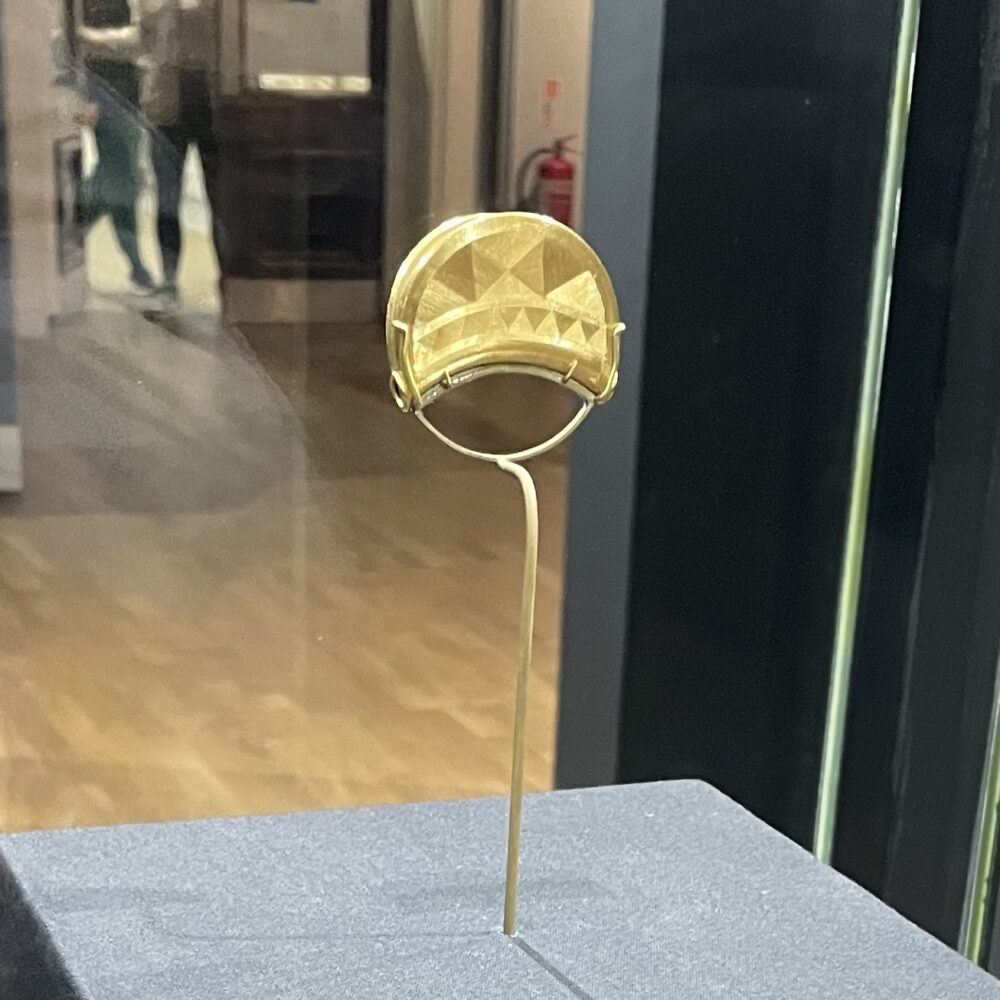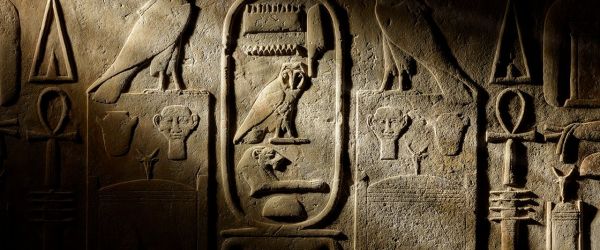I’ve been to visit ‘Gathering Light’

The full title of this exhibition appears to be A British Museum Spotlight Loan: Gathering Light: a Bronze Age Golden Sun. The central object of the exhibition is a gold pendant—inexplicably displayed on a stick rather than in a hanging fashion—which dates back to the Bronze Age. It was found in Shropshire in May 2018.
I liked that the exhibition didn’t over-interpret the object. For example, there was text attempting to address why the design differs on each side of the pendant, which came to no firm conclusion.
I didn’t, however, learn much from the exhibition. There were a few local Bronze Age finds displayed alongside, but the exhibition didn’t leave me able to explain the historical importance of the main object.
I also didn’t like the degree to which the space was ‘British Museum’ branded. I’ve whinged about this before, and I should probably change the record, but when an exhibition about a Bronze Age object contains the works ‘British Museum’ more times than the words ‘Bronze Age,’ something is amiss. It feels like walking into an advert rather than an exhibition.
It was disappointing to see that the case containing the Faith and Science objects I’ve previously mentioned was covered with vinyls concealing the contents. It felt as though there was concern that they might detract from the British Museum’s special exhibition, with which they shared a space.
As you might tell, I didn’t take much away from this exhibition.
Gathering Light continues at Sunderland Art Gallery until 3 June.
This post was filed under: Museums, Post-a-day 2023, British Museum, Sunderland, Sunderland Art Gallery.
